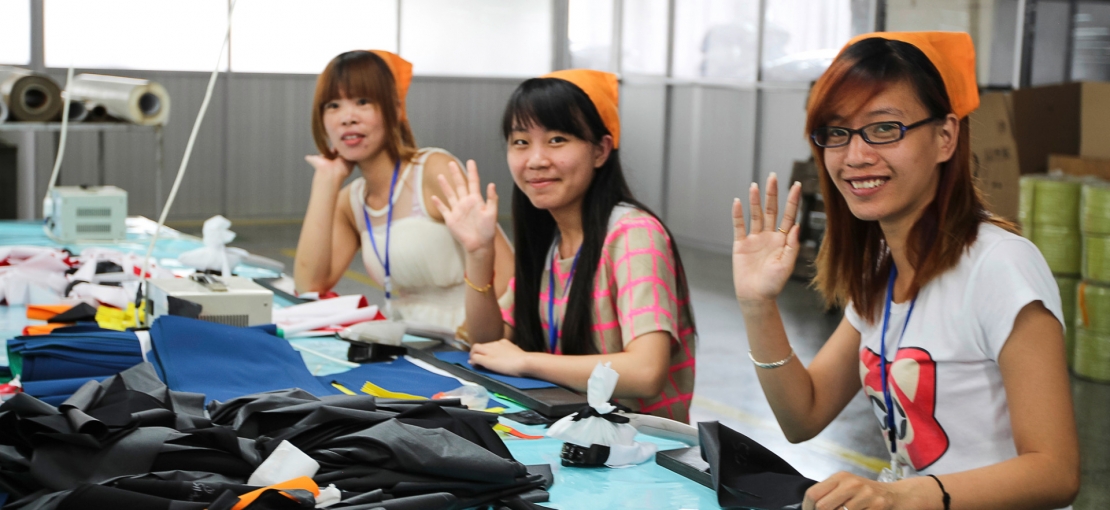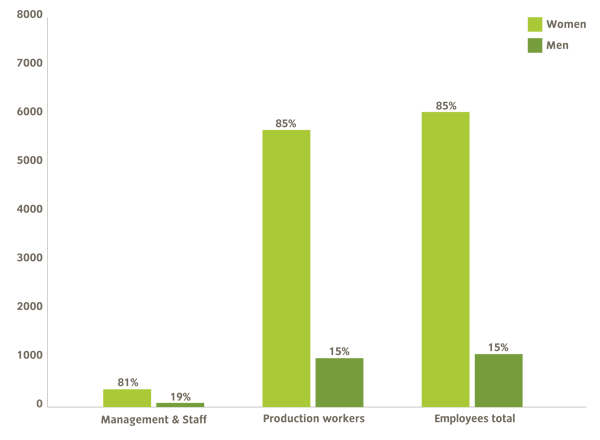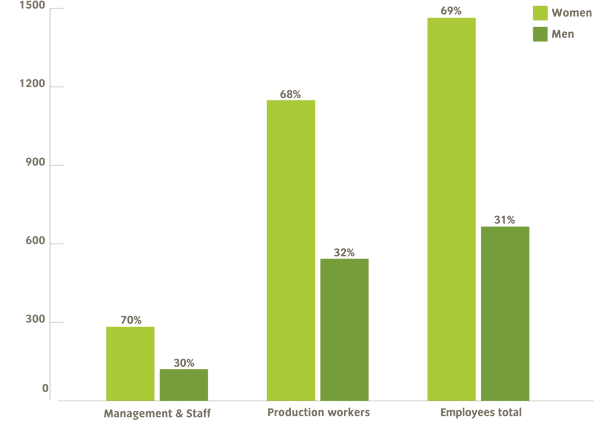
Equal opportunity in the supply chain
Equal pay for men and women
Equal opportunity is a concern for us in our Asian production facilities. The composition of the workforce at the management level tells us a lot about gender equality. FWF audits report on the gender distribution in the two categories "Management & Staff" and "Production workers".
In the facilities in Vietnam audited in 2013, a total of 81 percent of employees in "Management & Staff" were female and 19 percent male. In the "Production workers" 85 percent of the workforce were female and 15 percent male.
In the category "Management & Staff" in China, 70 percent were women and 30 percent men. In the "Production workers" category, there was a very similar distribution: 68 percent were women, 32 percent men.
| GRI: | LA12 |
| GRI: | LA13 |
| GRI: | HR3 |
| GRI: | DMA Equal Remuneration for Women and Men |
Two-thirds to three-quarters of the workforce are female
As a rule of thumb, we have established that the proportion of women to men in the production facilities for the clothing industry lies between 68 and 75 percent. Many of our producers, therefore, either have their own child care or plan to set one up.
Minimal gender-discrimination in China and Vietnam
With regard to wage discrimination, the FWF addresses this issue with the creation of the Wage Ladders. If there are problems, they will be listed in the comments under the Wage Ladder.
In China and Vietnam, this is hardly ever a problem. However, in India and Bangladesh there is quite an imbalance in pay between men and women.
The FWF evaluates indirect discrimination and explores the question of whether a company has some departments in which the wages are generally higher, or in which men are preferably employed even though women could also do the job
No complaints at VAUDE suppliers
There were no complains regarding the equal treatment of employees at our VAUDE suppliers during the FWF audits in China and Vietnam.






